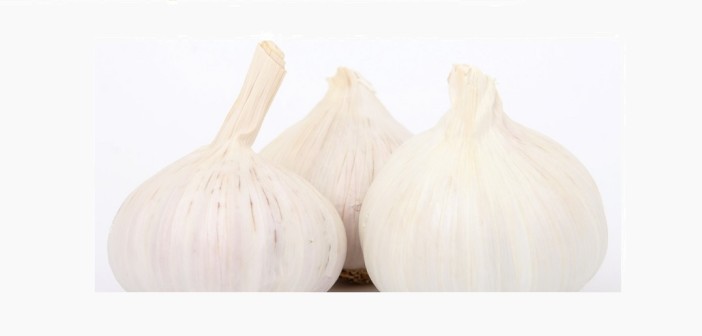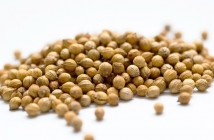For a small piece of spice, garlic (Allium sativum) surely has a big and well-deserved reputation. Although it may not always ward off vampires and bring good luck as stated by folklore, it is guaranteed to transform any meal into an aromatic, bold and healthy delicacy. It is a member of the lily family, like onions, leeks and chives.
The spice is arranged in a head (the bulb) which averages about two inches in diameter and height, and is composed of several small separate cloves. Both the entire bulb and cloves are encased in paper-like sheathes that can be of different hues, from white to purple. Although the cloves have a firm texture, they can be easily crushed or cut. Its taste is unique that hits the palate with hot pungency, which is shadowed by a subtle background of sweetness. While the elephant garlic has bigger cloves, it is actually a variant of the leeks, thus does not offer all the benefits of the regular garlic.
Taste and Aroma
Raw garlic has a strong, acrid, and heated taste. Cooked garlic has a mellower and sweeter flavor.
Pairing Spices
Ajowan, bay leaves, caraway, chives, coriander, fennel seeds, mustard, oregano, parsley, pepper, rosemary, sage, tarragon, thyme, mint.
Complements
Practically every savory dish. Work especially well with stir-fried and curry dishes.
Culinary Uses
Garlic is widely used in many dishes across regions, from Asia, Middle East, northern Africa, southern Europe, to South and Central America. Asia, among all, is one of the regions consuming the most garlic, and often use it as a base for stir-fries, curry pastes, sauces, and soup. The intensity and aroma of the flavor vary with the different cooking methods.
When using garlic in any recipe, it is best to be prepared raw. If you cannot tolerate it, just add some chopped bits towards the end of cooking time to retain its maximum flavor and nutrition. Do not expose it to too much heat as it may burn the garlic and develop a bitter taste. If combined with oil, it is recommended to avoid high-temperatures as well. Keep the heat at 121 degrees Celsius or lower to preserve the health benefits of both garlic and oil.
Buying and Storing
Garlic comes fresh, dried and powdered on the market, but fresh varieties are always available in many countries around the world. To ensure flavor and nutritional benefits, always choose fresh garlic. Choose those with firm bulb and papery dry skin without signs of sprouting or mold. Though convenient, flake, powder and paste forms only provide less culinary and health benefits.
It is not necessary to refrigerate garlic as the moisture can cause the bulb to grow moldy and deteriorate. It is best to store garlic in a well-ventilated basket or container at a cool room temperature away from humidity and sunlight. This will help maintain its maximum freshness and help prevent sprouting.
Garlic Health Benefits
The most unique nutrients found in garlic are sulfur compounds, which are well-studied and have shown to function as antioxidants. In fact, some of them provide anti-inflammatory benefits. Aside from these, the spice also contains manganese, vitamins B1, B6 and C, copper, phosphorus, selenium and calcium. These nutrients play an important role in nourishment.
Due to its healthy components, garlic has been used by many people to maintain good health and even help treat some ailments and prevent againg and hair loss. It generates nitric oxide that can relax and widen blood vessels, lowering the risk of getting high blood pressure. It is also used to help prevent heart attack and diabetes. Aside from these benefits, according to National Cancer Institute, preliminary studies show that garlic may reduce the risk of developing or preventing gastrointestinal tract and several other types of cancer.
Use in Supplements
Being able to produce a chemical called allicin, garlic has been developed into supplements. These products are formulated to aid in nutrition and help fight off common health conditions, such as fever, cough, rheumatism, hemorrhoids, asthma, bronchitis, stress and fatigue. Opt for the garlic supplements with enteric coating as they will dissolve in the intestine and not in the stomach.




